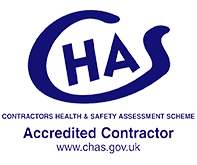
The Different Types of Woodworm and How to Treat Them
Woodworm is the common term used to describe a number of wood-boring insects that can cause significant damage to wooden structures and furniture in residential and commercial properties. These insects are typically found in humid, damp places and can be difficult to identify.
The damage caused by woodworm can range from cosmetic damage to structural damage. Woodworm can have a profound impact on the structural integrity of wooden objects. Therefore, it is highly important to identify a woodworm infestation early and take the appropriate steps to prevent further damage from occurring.
In this post, we take a deeper look at the different types of woodworm, and how you can go about treating them. Read on to learn more about this topic, and if you’d like to book woodworm treatment in the UK, then visit the Kenwood PLC website today.
Common Species of Woodworm
- The Common Furniture Beetle (Anobium punctatum) is a species of beetle known to attack sapwood of both softwoods and hardwoods. Infestations appear as round holes that are around 2mm in diameter. By using Kenwood insecticide, you can effectively treat the sound timbers, which will eliminate existing infestations and provide future protection to the timbers.
- The Powder Post Beetle (Lyctus brunneus) superficially looks similar to the Common Furniture Beetle, with holes approximately 2mm in size. However, it only attacks the sapwood of wide-pored hardwoods such as oak, elm, and obeche. This type of beetle is typically found in items of recently imported hardwoods, and also in plywood where the obeche core is attacked.
- The Death Watch Beetle (Xestobium rufovillosum) causes damage that looks like a large furniture beetle, with holes around 3mm, often with extensive tunnelling. It can result in substantial damage, and affected timbers are normally always hardwoods, with some level of decay – commonly affecting oak.
Death Watch Beetle also attacks softwoods if it is in contact with hardwood. The embedded timbers are especially susceptible. Re-treatment on a periodic basis may be required, as a result of large dimension timbers. Some timber replacement is often required too.
- The House Longhorn Beetle (Hylotrupes bajulus) is a significant pest that attacks the sapwood of softwoods, particularly within roof voids and loft areas. Tunnelling can be highly destructive to timber, leading to complete sapwood disintegration while leaving a thin outer surface intact. This often necessitates complete replacement of the affected timbers.
Identification of an active infestation of woodworm is done by looking for holes in the timber, usually 6-8mm wide and oval in shape with uneven edges. To treat this type of infestation, a deep penetration preservative paste is the best option.
Benefits of Treating Woodworm
Treating woodworm in a residential or commercial property has many benefits. First of all, it prevents structural damage resulting from woodworm. Woodworm problems can cause substantial damage to the structure of a property. But, with the right treatment by a professional, damage can be prevented through the eradication of the infestation.
Similarly, treating woodworm can help protect your property’s furniture and possessions from further infestation and damage. Untreated woodworm can escalate and get much worse, so it’s imperative that you get it treated as early as possible. Financially, woodworm treatment is more cost-effective in the long-run than having to replace your furniture and other possessions. It’ll also give you peace of mind that your property is safe and protected too.
Professional Woodworm Treatment
At Kenwood PLC, we provide professional woodworm treatment, using a range of low odour, water-based preservatives. The process typically requires properties to be vacated only for short periods of time. After a site inspection and risk assessment by our surveyor, full details of the specific project are provided.
Our most common method for woodworm treatment to timber floors involves exposing the timbers by lifting the floorboards in a parallel manner. This enables us to gain access to the sub floor void. Then, the joists, wall plates, bearers, sub floor timbers and the underside of the floorboards are treated with the Kenwood insecticidal timber preservative.
The Kenwood insecticide is specially formulated for deep penetration into the timbers; this is to guarantee the eradication of the existing woodworm infestations, as well as the future protection of the timbers.
Why Choose Kenwood PLC?
If you are searching for a woodworm treatment company that operates in the South East including London and the Home Counties, then Kenwood PLC is the number one choice for your requirements. We have been established for more than 30 years, so you can expect an experienced, professional and trusted service from our knowledgeable team.
We visit around 20,000 properties a year, so we have a vast amount of experience providing our services to customers with all types of needs and requirements. No matter the specifics of your woodworm infestation, we’re confident that we can provide you with a first class service and end result.
We provide guarantees on our timber treatments for up to 20 years, depending on the type of infestation and the proposed treatments. With excellent reviews and testimonials across all of our services, your woodworm treatment will be in the safest hands around.
Finally, we’re a Chartered Building Company, full members of the BWPDA (British Wood Preserving & Damp Proofing Association), PCA (Property Care Association), CHAS and the Guarantee Protection Trust – so you can fully trust our woodworm treatment specialists.


